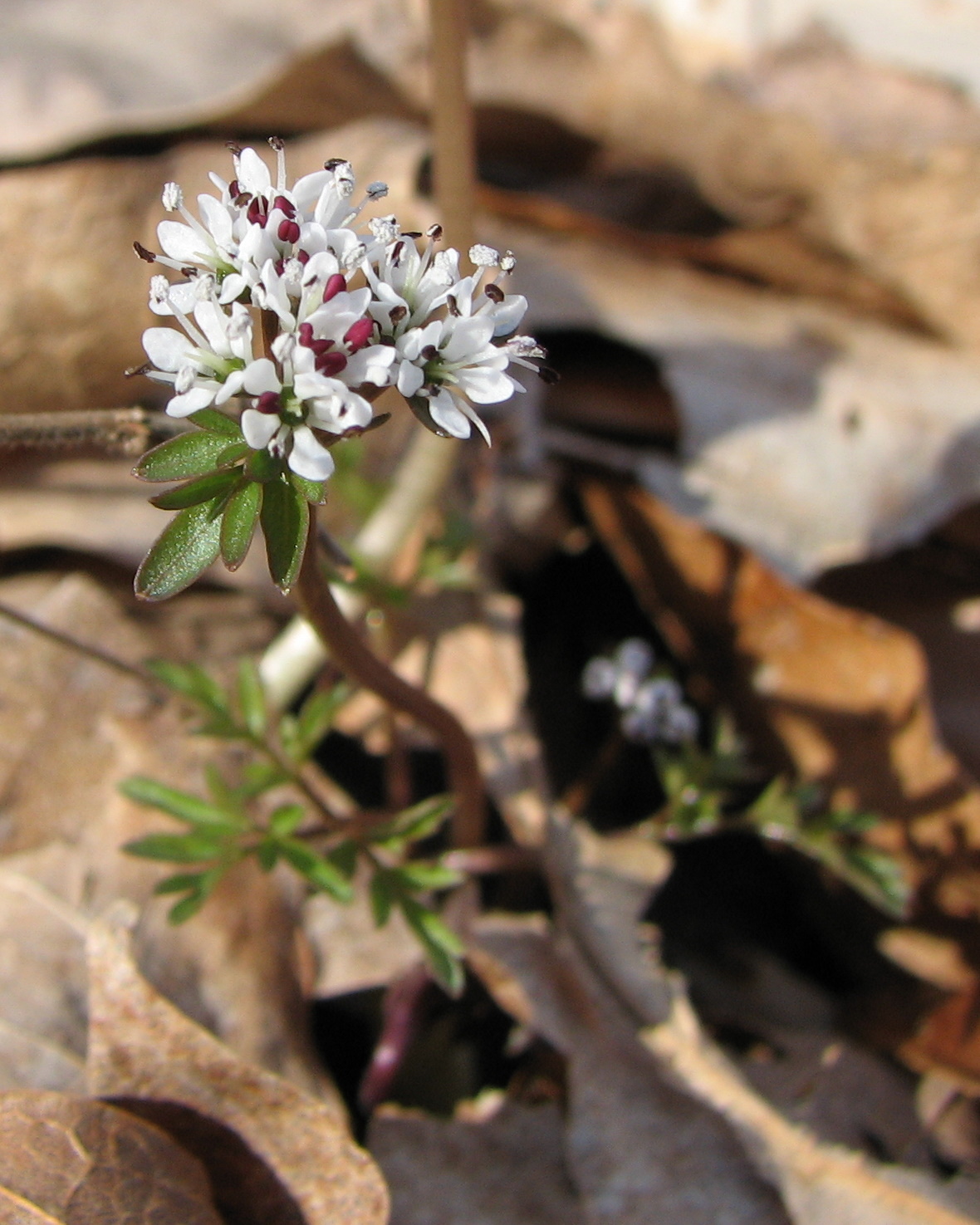- Erigenia bulbosa
Taxobox
name = Erigenia bulbosa

image_width = 240px
image_caption = "Erigenia bulbosa"
regnum =Plant ae
divisio = Magnoliophyta
classis =Magnoliopsida
ordo =Apiales
familia =Apiaceae
genus = "Erigenia "
species = "E. bulbosa"
binomial = "Erigenia bulbosa"
binomial_authority = (Michx.) Nutt."Erigenia bulbosa", also known as harbinger of spring or pepper and salt, is a
perennial plant in thecarrot family (Apiaceae ). "E. bulbosa" is the onlyspecies in thegenus "Erigenia" (Nutt.). This plant is known as harbinger of spring because it is one of the earliest blooming native wildflowers of richforest s in the mid-latitudeUnited States . It is found as far north as centralNew York and southernWisconsin , west to the westernOzarks , and south to centralAlabama . [ [http://plants.usda.gov/java/profile?symbol=ERBU USDA PLANTS Database: "Erigenia bulbosa"] ] It is also found in extreme southernOntario .Throughout most of its range it blooms from late February through early April. It is a smallspring ephemeral reaching only 5-15 cm tall when in flower, and slightly larger afterwards. Each spherical bulb gives rise to a single purplish stem, which terminates in anumbel . The flowers have whitepetal s and large dark-reddishanther s. The teardrop shaped petals are 3-4 millimeters long, widely spaced and do not touch each other. As is characteristic of the carrot family, the leaves of this plant are sheathed at the base and pinnately divided into many small sections.Ecology
This plant is an occasional in rich hardwood forests of eastern
North America . Its typical associates include spring beauty ("Claytonia virginica "), and cut-leaf tooth wort ("Cardamine laciniata "). All of these early spring blooming plants are pollinated bysolitary bee s, and to a lesser extent, flies andhoney bee s. "E. bulbosa" has a small daily accumulation of nectar per flower (7–38 µg sugar/flower), but the presence of numerous, closely arranged, simultaneously blooming flowers in the umbel may increase the overall nectar incentive for the pollinators. [ [http://www.bioone.org/perlserv/?request=get-document&doi=10.3159%2F1095-5674(2006)133%5B535%3ASNSFSB%5D2.0.CO%3B2 Dailey, T. B. & P. E. Scott 2006. Spring nectar sources for solitary bees and flies in a landscape of deciduous forest and agricultural fields: production, variability, and consumption. The Journal of the Torrey Botanical Society 133:535–547] ] The nectar produced by "E. bulbosa" only contains the sugarfructose . [ [http://abstracts.co.allenpress.com/pweb/esa2002/document/?ID=4308 Dailey, et al. 2003. Nectar rewards of co-flowering spring herbs in woodlands and adjacent agricultural fields. Abstracts: 87th Annual Meeting of the Ecological Society of America.] ]These plants are protected in
New York andWisconsin as stateendangered plants, and inPennsylvania asthreatened .Uses
The bulb is edible both cooked and raw. [ [http://www.pfaf.org/database/plants.php?Erigenia+bulbosa Plants for a Future Database: E. bulbosa.] ] The
Cherokee were known to chew this plant as medicine for toothaches, it is unknown what parts of plant they chewed. [ [http://herb.umd.umich.edu/herb/search.pl?searchstring=Erigenia+bulbosa Dr. Moermann's Ethnobotanical database: E. bulbosa] ] This plant is sometimes used in nativewildflower garden s throughout its range.References
Wikimedia Foundation. 2010.
